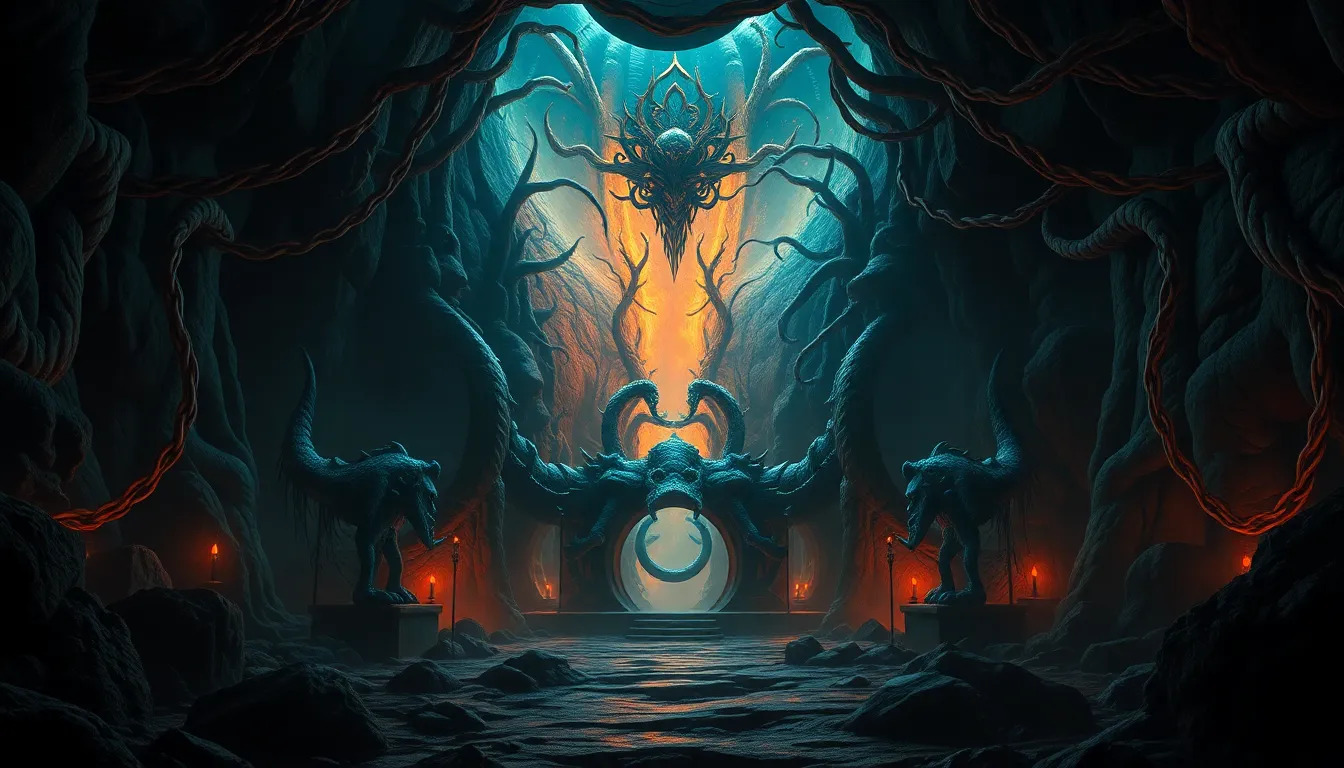The Underworld: A Mythical Exploration of Fear and Wonder
Introduction: The Allure of the Underworld
The concept of the underworld has captivated human imagination across various cultures and epochs. Often defined as a realm beneath the earth where souls reside after death, the underworld embodies a complex interplay between fear and wonder. In mythology, this realm is not merely a place of punishment or despair; it is also a site of transformation, revelation, and ultimate understanding.
Historical Perspectives on the Underworld
Ancient civilizations held diverse views regarding the afterlife, shaping their understanding of the underworld through religious beliefs and cultural practices. For instance:
- Mesopotamia: The Sumerians envisioned a dreary underworld known as Kur, where the dead lived a shadowy existence.
- Egypt: The Egyptians believed in a richly adorned afterlife in the Field of Reeds, where the deceased would live in peace if their hearts were lighter than a feather.
As time progressed, the concept of the underworld evolved, reflecting changing beliefs about life, death, and morality. Various cultures adapted their narratives, providing unique insights into their societies’ values.
The Underworld in Mythology: A Comparative Analysis
Different mythologies offer rich narratives surrounding the underworld, often portraying it as a complex realm inhabited by gods, spirits, and the souls of the deceased. A comparative analysis reveals intriguing similarities and differences:
- Greek Mythology: Hades is the god of the underworld, ruling over a realm filled with shades. The River Styx serves as a boundary between the world of the living and the dead.
- Norse Mythology: Hel is the goddess of the underworld, a place where those who did not die gloriously in battle reside. It is often depicted as a cold and dark realm.
- Aztec Mythology: Mictlan is the underworld where souls navigate through various trials before reaching their final resting place.
- Hindu Mythology: Naraka represents a place of punishment for sins, from which souls may eventually be reborn.
Symbolism and Archetypes of the Underworld
The underworld is laden with symbolism, often depicted through various elements that represent the transition from life to death. Common symbols include:
- Rivers: Such as the Styx, representing the passage between life and death.
- Gates: Often guarded, symbolizing the threshold of the afterlife.
- Guardians: Figures like Charon or Cerberus who serve as protectors of the underworld.
These archetypal figures carry deep meanings, often representing the fears and challenges associated with death. For example, Charon, the ferryman, symbolizes the necessity of confronting one’s fate, while Cerberus, the three-headed dog, embodies the inevitability of death.
Fear and the Underworld: Psychological Interpretations
The underworld serves as a powerful metaphor for confronting human fears, particularly those surrounding death and the unknown. Psychological theories, such as Carl Jung’s concept of the shadow self, suggest that the underworld represents our hidden fears and repressed emotions. Engaging with these themes in mythology allows individuals to explore their psyche and the nature of existence.
Wonder and the Underworld: The Quest for Knowledge
In contrast to fear, the underworld also embodies a realm of wonder and enlightenment. Many mythical journeys to the underworld are transformative, offering insights and revelations:
- Orpheus: His descent into the underworld to rescue Eurydice symbolizes love’s power and the longing for understanding.
- Dante’s Inferno: This literary work portrays a journey through the underworld as a means of moral and spiritual awakening.
These narratives illustrate the belief that confronting the underworld can lead to profound personal growth and understanding of the human condition.
Art and Literature: The Underworld’s Influence
The underworld has significantly influenced art and literature throughout history. It is depicted in various forms, from classical paintings to modern sculptures. Key literary works exploring the theme of the underworld include:
- The Divine Comedy: Dante Alighieri’s epic poem details a journey through Hell, Purgatory, and Paradise.
- The Epic of Gilgamesh: This ancient text includes a journey to the underworld, emphasizing the inevitability of death.
These works highlight the underworld as a rich source of inspiration, exploring themes of mortality, redemption, and the human experience.
Modern Interpretations and Adaptations of the Underworld
In contemporary media, the underworld continues to be a compelling theme. Films and video games often draw upon traditional myths while introducing new interpretations:
- Films: Movies like “Hercules” and “What Dreams May Come” offer modern takes on the afterlife.
- Video Games: Titles such as “God of War” and “Hades” engage players with interactive narratives centered around the underworld.
These modern narratives reflect societal attitudes toward death and the afterlife, often merging elements of fear and wonder while exploring personal journeys.
Cultural Rituals and Practices Related to the Underworld
Various cultures have developed rituals and practices surrounding death and the afterlife, reflecting their beliefs about the underworld:
- Death Rites: Funerary customs often include rituals intended to honor the deceased and guide their souls to the afterlife.
- Día de los Muertos: In Mexican culture, this celebration honors deceased loved ones, blending joy and reverence.
Such practices highlight the enduring connection between the living and the dead, illustrating how cultures navigate the complexities of mortality.
Conclusion: The Enduring Legacy of the Underworld
The mythology of the underworld continues to resonate deeply within modern thought and culture. It serves as a reminder of humanity’s enduring fascination with death, the afterlife, and the mysteries that lie beyond. The balance of fear and wonder in understanding the underworld invites reflection on our mortality and existence, encouraging exploration into the depths of the human experience.

